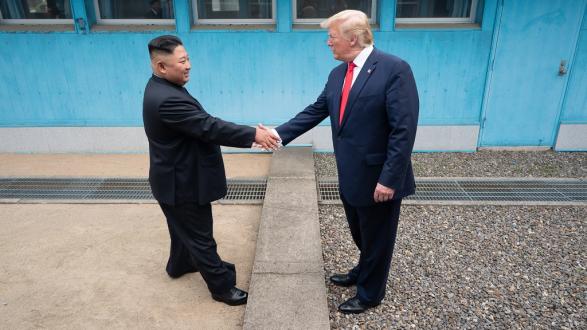The dramatic summitry that took place on June 30 in the demilitarized zone (DMZ) separating the two Koreas is the latest sign that North Korea’s transition to a “normal country” is on track. Coming into the 30th anniversary year of the fall of the Berlin Wall, the events of June 30 may go down in history as a watershed moment in the process marking the end of the Cold War in the Korean Peninsula.
What was most significant about the meetings between the leaders of the two Koreas and the United States was that they psychologically and symbolically dismantled the decades-old division of the Korean Peninsula. The DMZ, still the most heavily militarized border in the world, used to be so fraught with tension that visiting U.S. presidents called it “the scariest place on earth.”
What was most significant about the meetings between the leaders of the two Koreas and the United States was that they psychologically and symbolically dismantled the decades-old division of the Korean Peninsula.
On June 30, millions of people in the two Koreas and many others around the world watched on live television as President Donald Trump and Chairman Kim Jong-un freely walked across the DMZ together and President Moon Jae-in later joined their company, all three men smiling and effusively praising one another.
This was a historical moment reminiscent of November 9, 1989, when East Berliners spontaneously and joyfully walked across the Berlin Wall, toppling the most visible symbol of the Iron Curtain.
Read the full article at The Diplomat.
____________________
Jongsoo Lee is a Pacific Council member and senior managing director at the Brock Group.
This article was originally published by The Diplomat.
The views and opinions expressed here are those of the author and do not necessarily reflect the official policy or position of the Pacific Council.




